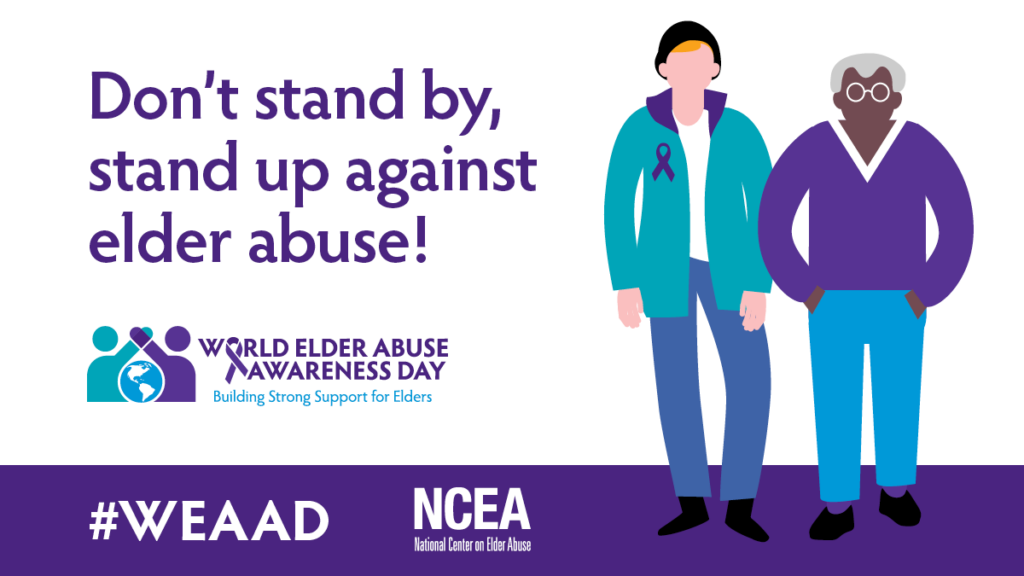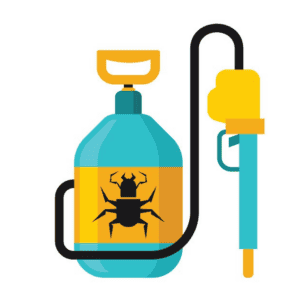June is a very important month- and not just because it means the beginning of summer! June is both national safety month and national elder abuse awareness month, a time to set aside and reflect on the safety of our relatives and vulnerable community members. Today on the blog we’re going to go over basic definitions of types of elder abuse, explore resources, and outline five easy things we can all do to prevent elder abuse.
It’s important to remember that elder abuse can happen in any community. According to the US Centers for Disease Control and Prevention, it’s estimated that 1 in 10 older adults aged 60 or older will experience some form of abuse. According to the World Health Organization, elder abuse rose during the Covid Pandemic.It’s difficult to know exactly how many cases of elder abuse happen each year since it’s under-reported for a number of reasons, including shame, fear of retaliation from the abuser, fear of loss of independence, worry that their concerns will not be taken seriously. In cases where the abusive caregiver is a family member, victims may hesitate to report abuse because they don’t want their loved one to get into trouble. Elder abuse cases are expected to rise as the population of older adults increases worldwide.
Types of Abuse
The National Center on Elder Abuse (NCEA), elder abuse can be broken into different categories. It’s important to remember that an older adult can experience different types of abuse at the same time.
- Physical Abuse- “the intentional or reckless use of physical harm or physical coercion that may result in bodily injury, physical pain, or impairment.”
- Look for signs like bruises, broken bones, injuries that take longer to heal, and over-medication.
- Sexual Abuse- “non-consensual sexual contact of any kind with an older adult.”
- Look for signs like unexplained sexually transmitted infections, torn underwear, bleeding or bruising in the genital area.
- Emotional or Psychological Abuse- “the infliction of anguish, pain, or distress through verbal or nonverbal acts such as harassment or threats.”
- Look for signs such as a caregiver often yelling or an older adult who becomes withdrawn or may become anxious around their abuser.
- Financial Abuse- “the illegal, unauthorized, or improper use of an older person’s resources for monetary or personal benefit, profit, or gain […].” The most common type of financial abuse is scams.
- Look for signs like new signers on an older adult’s bank account, unusual charges, or large withdrawals.
- Neglect- “the refusal or failure of a caregiver or fiduciary to fulfill any part of a person’s obligations or duties of care to an older person.”
- Look for signs like a caregiver leaving an older adult home alone while they go to work or not getting them the medical help they need (e.g., the older adult needs a walker and glasses, but has neither).
- Self-Neglect- “an adult’s inability, due to physical or mental impairment or diminished capacity, to perform essential self-care tasks.”
- Look for signs like the older adult having an unkempt appearance (especially if the older adult is usually more put together) and/or dehydration.
5 Things We Can ALL Do
- Learn the signs of elder abuse. Some types of abuse can be more difficult to identify because the signs are subtle or may not come up unless you’re having a conversation with an older adult.
- Regularly visit your loved ones and/or vulnerable community members. Isolation is a risk factor for elder abuse. Checking in with an older adult regularly can improve their quality of life and make older adults less susceptible to abuse.
- Volunteer at your local senior center or senior living facility. Help fight isolation and support these crucial resources at the same time by volunteering at places where older adults gather.
- Share what you know. The more people in your family or community who know the signs of elder abuse, how to report it, and how to talk with older adults, the bigger the safety net for those older adults. Making sure your loved ones are up to date on current scams also helps prevent financial abuse (the SRC blog is a great resource for learning about scam prevention!)
- Think someone might be abused? Report it to Adult Protective Services as soon as possible.
- Bonus: Make sure to check in on caregivers too and see if they need a break. You can find information about respite care by visiting our online senior directory.
What should I do if I think someone is being abused?
- Call Adult Protective Services at (855) 444-3911.
- Report abuse to the attorney general.
- Call 911 if someone is in immediate danger.
Making the Call
- Report elder abuse by calling Adult Protective Services (855-444-3911). The Intake Unit is available 24 hours a day, 7 days a week.
- You can call the intake unit if you suspect elder abuse- better to say something than leave an older adult vulnerable to abuse! You can make a report anonymously.
- Have basic information ready:
- Older adult’s name
- Older adult’s address
- Brief description of the alleged abuse
- If possible, include the following information:
- Older adult’s age
- Older adult’s birthdate and/or Social Security Number
- Contact information for family members
- Name of anyone else living in the same home
- Name of alleged perpetrator(s)
- Even if you only have very basic information, the APS worker will still need to go through their questionnaire. It’s ok to answer their questions by saying you’re not sure or do not have that information.
- Once APS has the information they need, they’ll begin investigating the report. They have up to 3 days/72 hours to make initial contact with the vulnerable older adult.
Resources
- Michigan Long Term Care Ombudsman Program (866) 485-9393- the Ombudsman advocates for older adults in nursing homes and other long-term care facilities.
- Eldercare Locator 1-800-677-1116
- National Center on Elder Abuse (855) 500-3537
- National Elder Fraud Hotline (833) 372-8311
- National Domestic Violence Hotline (800) 799-7233
- Consumer Financial Protection Bureau (855) 411-2372
- Senior Resource Connect Good Neighbor Videos– this series of short videos goes over WHY we need to protect our vulnerable community members, abuse warning signs you can SEE and HEAR, and how to have a conversation with an older adult who may need help.
We all have a role to play in building a more aging-friendly community.






